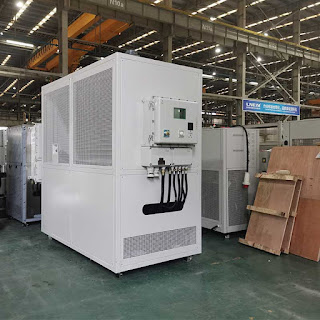The high and low temperature all-in-one machine is a new type of laboratory temperature control equipment, which has the functions of heating and cooling at the same time, and can achieve continuous temperature control from -120 ° C to 300 ° C with the same medium, eliminating the cumbersome steps of replacing the medium. According to the temperature and medium, the high temperature all-in-one machine is divided into oil-cooled high-low temperature all-in-one machine and water-cooled high-low temperature all-in-one machine. Applied to petrochemical, pharmaceutical and other chemical reaction process control.
1. Operation requirements. Equipment management personnel need to be familiar with the basic performance and main operation steps of the equipment, keep the technical data and operating instructions properly, and then check the protection device according to the start-up requirements of the equipment, control the ambient temperature, humidity, continuous working time, power supply voltage, etc., pay attention to moisture, Dust and corrosion resistant.
2. Power requirements. Conduct a power-on inspection, and if any circuit failure is found, please immediately shut down the device and report to the person in charge to prevent damage to the instrument due to short circuit. The power used by the high-precision high-low temperature all-in-one machine needs to meet the total power requirements of the machine, and the models of all-in-one machines are different, so the power should be determined according to the specific model. The required power is greater than the total power of the device, and the power supply needs to be grounded to ensure the use of
3. Shutdown request. If you do not use the device temporarily, you need to turn off the switch and unplug the power cord. The liquid in the storage tank also needs to be cleaned.
4. Maintenance requirements. Regularly maintain high-precision high and low temperature temperature control machines, solve instrument failures in time, maintain records, and clean and maintain large-scale equipment 2-4 times a year. Damaged equipment should be inspected by relevant personnel.





No comments:
Post a Comment